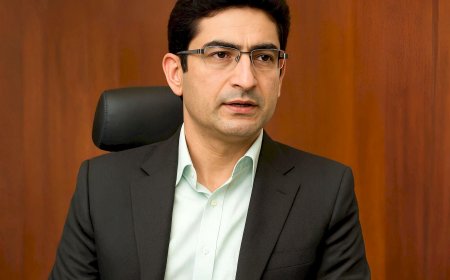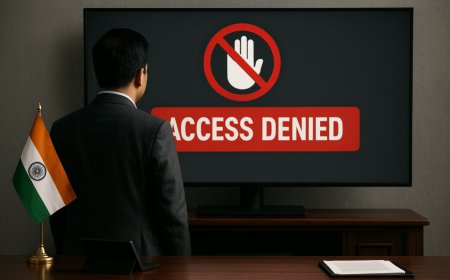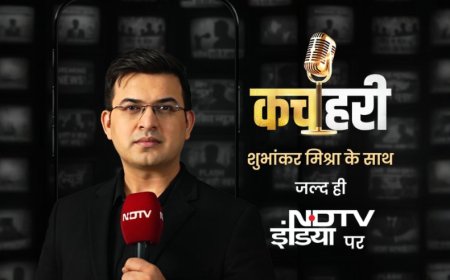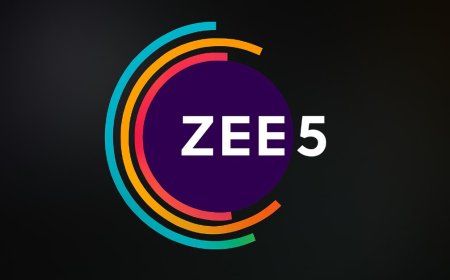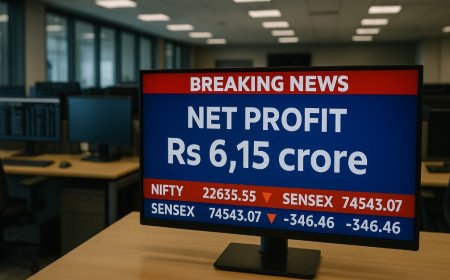Ashish Sehgal Bats for a Unified TV Rating System to Streamline Indian Broadcast Industry
Zee Media’s Chief Growth Officer, Ashish Sehgal, has called for a unified TV rating currency to ensure transparency, consistency, and trust in India's broadcast measurement

Introduction: Rethinking How We Measure What India Watches
In a dynamic and rapidly evolving broadcast landscape, how we measure what audiences are watching has become as important as the content itself. Now, Ashish Sehgal, Chief Growth Officer of Zee Media, is making a compelling case for a single, unified TV rating currency in India.
Sehgal believes the current multi-source measurement model fragments data, reduces trust, and creates inefficiencies for advertisers, broadcasters, and viewers alike. His proposal: streamline the system with one credible, standardized metric that serves the entire industry.
The Current State of TV Ratings in India
India’s TV industry primarily relies on BARC (Broadcast Audience Research Council) India to provide viewership data across channels and genres. However, in recent years, the ecosystem has faced:
-
Discrepancies in reporting
-
Allegations of data manipulation
-
The rise of digital measurement platforms creating parallel metrics
-
Confusion among advertisers about which numbers to trust
Add to that the competition from OTT and the push for convergence measurement—and it’s easy to see why Sehgal's call for a single rating system is gaining attention.
What Ashish Sehgal Is Proposing
In a recent industry interaction, Sehgal emphasized the urgent need for:
-
A standardized audience measurement system
-
Backing from broadcasters, advertisers, and regulatory bodies
-
Transparent methodologies and third-party audits
-
A singular source of truth for planning media buys
Why a Unified Rating Currency Matters
A single TV rating system offers a host of benefits:
1. Transparency for Advertisers
Brands need dependable data to make informed decisions. One metric eliminates ambiguity and builds confidence in ad spends.
2. Consistency in Measurement
Whether a viewer is watching a Hindi drama or a regional news bulletin, the same yardstick should apply. Consistency allows fair comparison.
3. Efficient Media Planning
Agencies and advertisers won’t need to toggle between different datasets, saving time and increasing efficiency.
4. Level Playing Field for Broadcasters
All channels, big or small, operate under the same metrics—ensuring equal opportunity for visibility.
5. Boost to Credibility
At a time when TRP manipulation allegations have shaken viewer trust, a unified rating system helps restore integrity to the measurement ecosystem.
Industry Support and Challenges
While many in the media and advertising world echo Sehgal’s views, implementing a single TV rating currency is no small feat. Challenges include:
-
Aligning interests across multiple broadcasters and networks
-
Balancing power between industry bodies and regulatory agencies
-
Incorporating both linear and digital viewing metrics into a unified system
-
Ensuring regional representation without bias
However, the benefits may outweigh the challenges if industry leaders agree on a neutral, technology-driven, and audit-backed solution.
Learning from Global Models
Globally, markets like the United Kingdom (BARB) and the United States (Nielsen) have long maintained single-source systems that evolve with viewer behavior. They’ve begun integrating streaming data, real-time analytics, and mobile viewing into their traditional measurement models.
India can take inspiration from these frameworks to build a future-ready system that merges TV and digital insights under one reliable roof.
A Future-Forward Vision for Indian Broadcast
Sehgal’s proposal isn’t just about ratings—it’s about redefining how India evaluates media success in an era of convergence.
As viewer habits shift across platforms—TVs, mobiles, tablets—advertisers need a unified lens to assess performance. A single rating currency could be the key to that clarity.
Conclusion: One Metric to Build Many Stories
The Indian television industry is too large, too influential, and too impactful to operate in a data haze. With thousands of crores spent annually on TV advertising, the time is ripe for a credible, unified rating system that reflects reality and drives responsible decision-making.
What's Your Reaction?
 Like
0
Like
0
 Dislike
0
Dislike
0
 Love
0
Love
0
 Funny
0
Funny
0
 Angry
0
Angry
0
 Sad
0
Sad
0
 Wow
0
Wow
0











